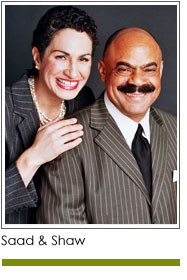 Lights, camera, action. In 1980 the United Negro College Fund, UNCF, launched the Parade of Stars telethon. It became a nationwide fundraising program raising millions of dollars for generations of students, and support for historically black colleges and universities. It became the largest one-day African American special event in the country. It changed black history – and American history – creating an acknowledged culture of fundraising in the African American community. America’s largest corporations became engaged. Small churches, teachers, sororities and fraternities became engaged. Donors and volunteers from across the country organized to support UNCF and celebrate black philanthropy.
Lights, camera, action. In 1980 the United Negro College Fund, UNCF, launched the Parade of Stars telethon. It became a nationwide fundraising program raising millions of dollars for generations of students, and support for historically black colleges and universities. It became the largest one-day African American special event in the country. It changed black history – and American history – creating an acknowledged culture of fundraising in the African American community. America’s largest corporations became engaged. Small churches, teachers, sororities and fraternities became engaged. Donors and volunteers from across the country organized to support UNCF and celebrate black philanthropy.
Here’s the back story. The telethon actually began years earlier in Dallas, Texas. The first telethon was a live performance at the Fairmont Hotel with STAX recording artists Rufus Thomas and Johnny Taylor backed by the Dallas symphony. The performance was filmed, edited and prepared for broadcast in 13 radio and television markets across Texas. Local volunteers answered phones and families across Texas called to give. A national fundraising movement was born.
The telethon gained national exposure in 1974 with hosts Nancy Wilson and Clifton Davis. Ron Bookman secured the talent; television and radio stations broadcast in select markets at no charge. This caught the attention of Anheuser-Busch and the rest is history. Lou Rawls, as spokesman for Anheuser-Busch, became the iconic host of the telethon. American Airlines, Kellogg, General Motors soon joined as sponsors and underwriters.
The telethon became a great recruiting tool for UNCF colleges. It also increased alumni pride and giving. It sent a message to corporations and foundations: UNCF colleges are important to African Americans and America. With an ear to the ground for the drumbeat of the community, these major funders joined with grassroots America to give – and give generously – to what became the “charity of choice” for African Americans. UNCF shed its image as an organization that appealed to the elite: it had launched a “people’s campaign” engaging donors and volunteers from all walks of life.
The telethon did what hadn’t been done before. It created a culture of fundraising throughout the black community that also engaged Hispanics, American Indians and Whites. It made UNCF a household word, and the phrase “A Mind is a Terrible Thing to Waste” one of America’s most iconic slogans. Corporations participated in cause-marketing focused on the black consumer. African Americans became the majority of UNCF donors, “documenting” their widespread support for the organization. The telethon provided an opportunity for all segments of the community to participate and be publicly recognized for their contributions. It provided economic opportunities for African American advertising agencies, marketing executives, producers, writers and small businesses. Most importantly it demonstrated the power of diverse volunteer-led fundraising. Our take: Think big, start small.
Mel and Pearl Shaw are the authors of “Prerequisites for Fundraising Success.” They provide fundraising counsel to nonprofits. Visit them at www.saadandshaw.com.
© Mel and Pearl Shaw











